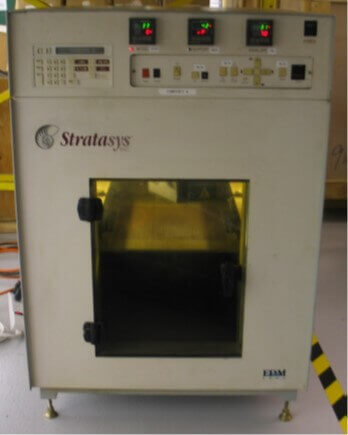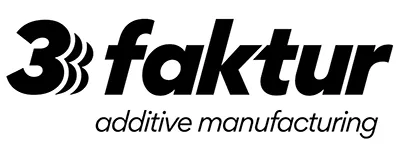
It all started in the 1960s and 1970s of the last century: British physicist and science fiction author Arthur C. Clarke had the first idea for a 3D printer, and in the comic “Tim and the Shark Lake,” Professor Calculus invents a 3D photocopier machine.
Half a century later, these visions of the future have become a 3D printing industry with growth projections of 30% annually. Computer blueprints become immediate reality, from digital design to the finished product, the journey has never been shorter than it is today. With three-dimensional printing methods, manufacturing requires less material, labor, and energy, enabling production in smaller quantities, based on individual needs, and closer to the customer.
The 1980s: The Birth of 3D Printing
The rapid development of 3D printing began in the early 1980s, driven by the need for fast and cost-effective solutions for generating prototypes for mass production. Scientists from Japan, France, and the USA had already been working on three-dimensional manufacturing technologies in the early 1980s. However, the invention of 3D printing is generally attributed to the American Charles Hull, who filed his first patent for the manufacturing process Stereolithography in 1984, which was granted to him in 1986. Stereolithography involves the use of photosensitive liquids, where selective areas are cured with a UV laser, forming the desired object.
In 1986, Hull founded the company 3D Systems and introduced the world’s first commercial 3D printer to the market a year later. To this day, 3D Systems remains one of the global industry leaders.
A few years later, two additional prototype technologies, the laser sintering process and the FDM process (Fused Deposition Modeling), also entered the market. In 1988, the American Carl Deckard patented the Selective Laser Sintering, a process in which plastic powder is fused with a laser. This method allows the manufacturing of components with almost any complexity. Around the same time, Scott Crump developed the FDM printing process and patented it in 1989. This process works similar to a hot glue gun: The filament-like plastic material is pressed through a hot nozzle, melting the material and applying it layer by layer.
With these patents, the three most important additive processes were created within ten years – 3D printing was born.
The 1990s: Creation of New Processes
Already in 1987, the world’s first stereolithographic device was launched, which made the layer-by-layer production of complex components possible in a fraction of the previously required time (more about stereolithography). In 1992, the start-up company DTM produced the world’s first selective laser sintering machine, which used powder instead of liquid and was irradiated with laser light (more about laser sintering). In the following years, more 3D printing players entered the market with newly developed or advanced process technologies. The company Z Corp., acquired by 3D Systems, laid the foundation for the development of the binder jetting process. It developed the Z402 printer, which is based on inkjet printing technology and produces models from gypsum powder and a water-based binder (more about the ColorJet process, a binder jetting technology). By the end of the 1990s, it was also possible to process not only plastics but also metals (more about metal 3D printing).
During this time, more and more CAD programs for 3D printing were introduced to the market. Sanders Prototyping (now known as Solidscape) was one of the first companies to develop specific software solutions for additive manufacturing.

Image: haveblue.org
The 2000s: Additive Manufacturing Matures
Especially in the medical field, this decade was a highlight in the history of 3D printing: For the first time, a 3D-printed organ was implanted in a human, synthetic support structures for a human bladder. A functioning miniature kidney was produced, leg prosthetics were printed from complex components, and blood vessels were created using bioprinting technology.
In the 2000s, 3D printing technology developed not only in depth but also in breadth. In 2004, the Replicating Rapid-Prototyper was developed. The 3D printer was capable of producing large parts for another 3D printer. This open-source project led to the spread of 3D printers for the workplace. With the expiration of the patent protection for the FDM process in 2009, a new wave of innovation was triggered. Prices of 3D printers for the workplace decreased, and 3D technology became accessible to many. The company MakerBot was one of the first companies to serve this trend with small, affordable devices; for a few hundred USD, the FDM printer was available for home or workshop use in small businesses.

Image: Baminnick, MakerBot Spikey Gear and Raft in MakerBot Cupcake CNC, CC BY-SA 3.0
The 2010s: On the Threshold of Industrial Production
In 2010, the first 3D-printed automotive prototype was produced, and the housing came entirely from a huge 3D printer. In 2011, the first 3D food printer was created, and NASA explores how astronauts can 3D print food in space. In 2014, NASA flew the first 3D printer to space to manufacture 3D-printed parts in the space station. In 2012, the first jaw prosthesis was 3D printed and transplanted, followed by the first 3D-printed bones in 2016.
The 3D printing processes have conquered the market. In industry, the possibilities of additive manufacturing have been recognized and integrated into innovation and production. More and more small and medium-sized enterprises are benefiting from the lower prices that 3D printing offers for prototyping. At the same time, 3D printing processes continue to be developed, new printing materials are researched and introduced to the market.
New technologies have also emerged: The Multi Jet Fusion process is currently the most productive additive plastic production process. The printed material is characterized by a homogeneous surface and a high, almost pore-free material density. The produced workpieces can be used both as prototypes and as serial parts. We at 3Faktur also rely on this technology and produce between 500 and 2,000 components per week per system.

Image: HP Inc.
The Future: All Signs Point to Manufacturing
The triumph of 3D printing technology has accelerated further, and 3D printing technology is on the verge of serial production. More and more materials can be printed, faster and in better quality than ever before. Previously used for niche products, 3D printing is becoming a key technology. This completely new type of manufacturing is usable for prototypes, individual pieces, and series production – around the clock. It allows for shorter supply chains, the avoidance of overproduction and spare parts inventories, and the use of recyclable materials in a circular system. The opportunities seem boundless…

Image: Desktop Metal

About 3Faktur: 3Faktur specializes in 3D printing, rapid prototyping, and rapid manufacturing. We utilize HP’s Multi Jet Fusion technology and offer various materials for prototyping and series production. If you have any questions about your project, feel free to contact us.
